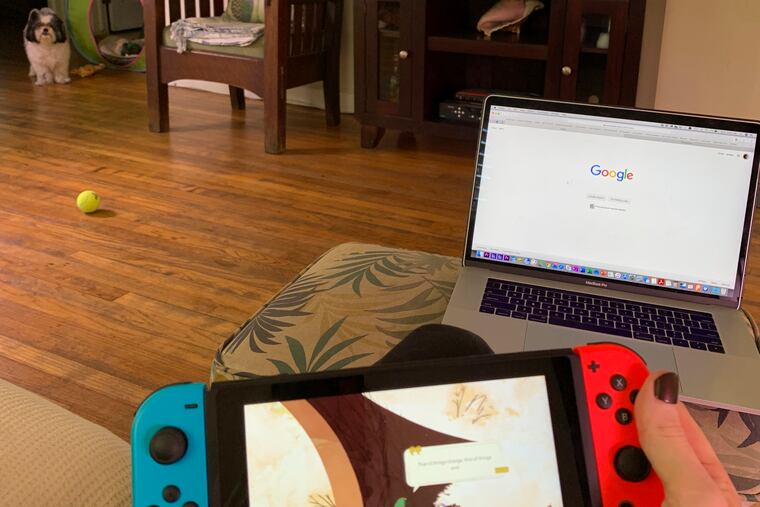Video games and children: When do parents need to worry? | Expert Opinion
Even before the pandemic, teens were spending hours playing video games. A 2018 poll of nearly 1,000 parents of teenagers showed the impact of gaming on their teens’ lives.

For more than a year, normal adolescent life has been anything but normal due to the pandemic. For many, school sports games were replaced by video games, fields were replaced by bedrooms or couches, and teammates were replaced by fictional online characters.
Even before the pandemic, teens were spending hours playing video games. A 2018 poll of nearly 1,000 parents of teenagers showed the impact of gaming on their teens’ lives. Here’s the play-by-play:
41% of teen boys and 20% of teen girls play video games daily.
37% of teen boys and 19% of teen girls spend three or more hours playing video games daily.
86% of parents believe that teens spend too much time playing video games and that gaming gets in the way of family activities/interactions (46%), sleep (44%), and homework (34%).
78% of parents underestimate the time that their teenagers spend playing video games.
Are there any benefits for children from playing video games? You bet! Here are a few:
Increased family bonding: Just as television and movies can be enjoyed together as a family, so can video games.
Increased skills: Video games can improve cognitive skills such as critical thinking and problem solving and improve motor skills such as hand-eye coordination.
Increased socialization: Online video games can be a social activity for kids to play with friends who they may be unable to see in person.
But video games can also be dangerous. The American Academy of Pediatrics (AAP) has voiced concerns that playing or watching aggressive video games may cause a child to act in a negative or violent way in real life. In a study conducted by Ohio State University involving 220 children ages 8 to 12, children who played a video game that included guns or swords were more likely to touch a real, disabled handgun, handle a handgun longer, and pull the trigger more times than children who played nonviolent video games. In a meta-analysis of violent video games, the research found that exposure to violent video games is a causal risk factor for increased aggressive behaviors, thoughts, and moods.
Furthermore, in 2018, the World Health Organization announced “gaming disorder” as a new mental health condition included in the 11th edition of its International Classification of Diseases (ICD). The ICD is the international standard for reporting diseases and health conditions.
How can parents recognize when their child has a video gaming problem? Keep an eye out for these behaviors:
Spending more time gaming.
Giving up such previously enjoyed activities as sports or talking with friends.
Sadness, anxiety, or irritability when not gaming (withdrawal symptoms).
Gaming more when upset.
Increasing tiredness due to staying up late gaming.
Deceiving others about the amount of time spent gaming.
Increasing aggressive or violent behavior.
Increasing depression or anxiety.
Declining school grades.
Here’s a game plan for parents to prevent a video gaming problem:
Be aware that marketing entices children: Video game logos appear on backpacks and blankets and sweatshirts and T-shirts and socks (oh my!).
Monitor games for content: Watch your children as they play to make sure you are comfortable with the content of the video games they are playing. The AAP pointed out that the rating system may not always be reliable. Ratings are usually set by the Entertainment Software Rating Board (ESRB) which relies on video game creators to report aspects of their game that may not be appropriate for children, such as language, violence and sexual content. And research shows that video games with restrictive ratings are even more attractive to children (go figure!).
Help children and teens prioritize their time: Once upon a time, the AAP recommended strict limits on screen time. The pandemic has made us ease these guidelines as long as screen time does not interfere with essential activities. We recommend that before playing video games, kids finish their homework/studying, exercise, and house chores. After completing these activities, they may utilize the rest of the day to play video games, watch television, or do any other activities they might enjoy. This provides incentive for finishing their tasks and also allows them to exercise decision-making in determining how they use their free time.
Play together as a family: Gaming together can provide opportunities for conversation and bonding. What could possibly ever go wrong with a little friendly family competition?
Rima Himelstein is a pediatrician and adolescent-medicine specialist at Nemours/Alfred I. duPont Hospital for Children. Dan Bui is a third-year pediatric resident at Nemours.